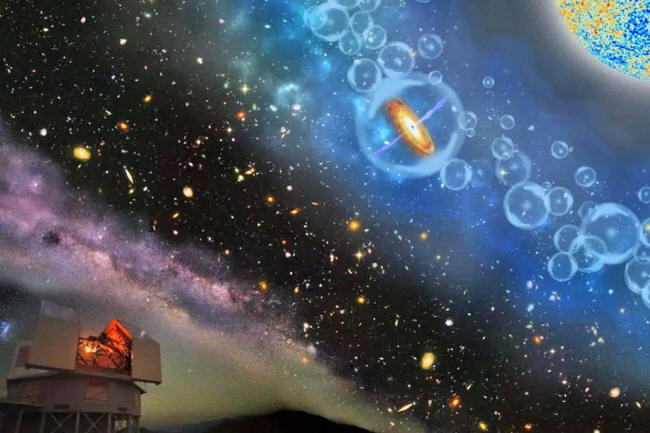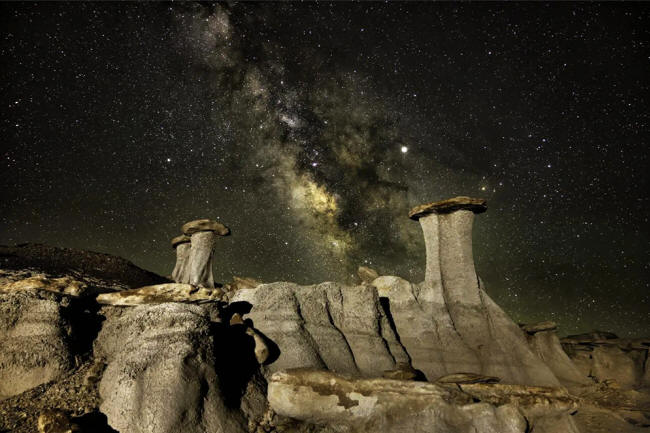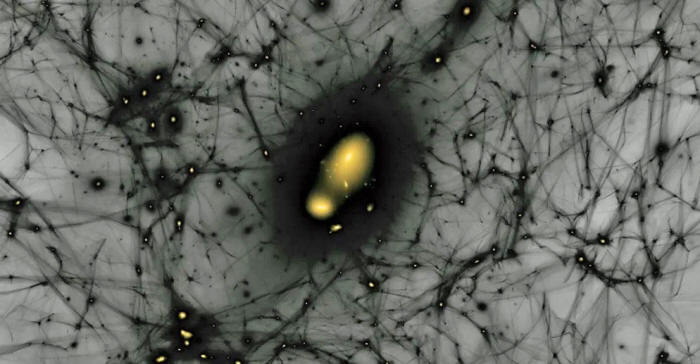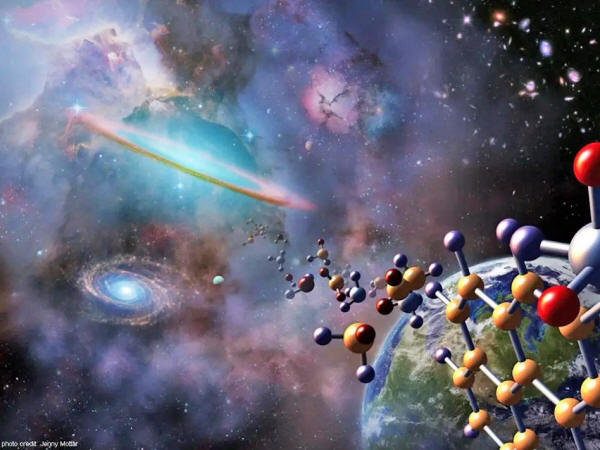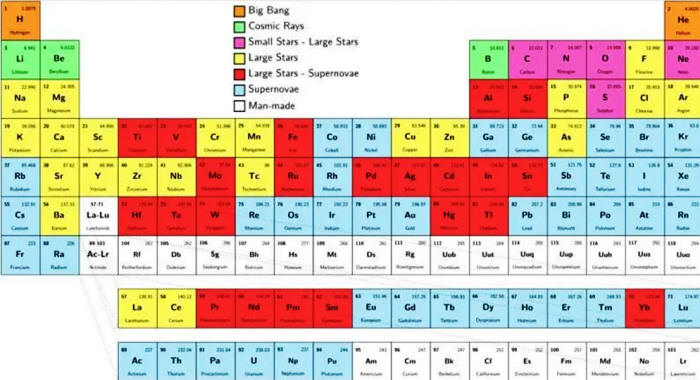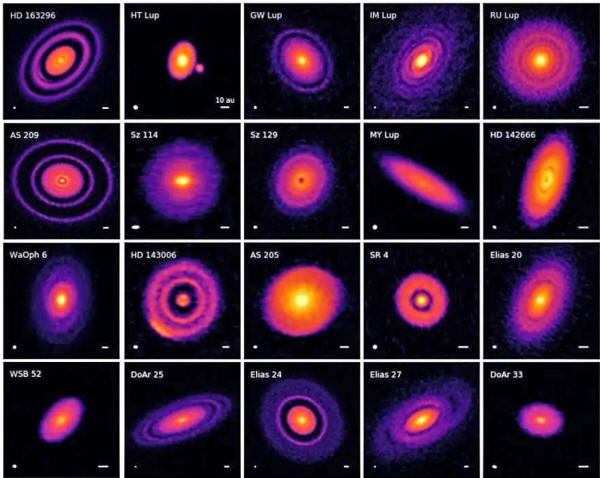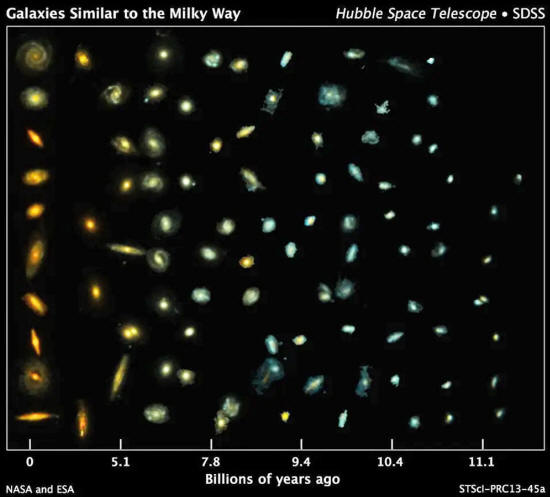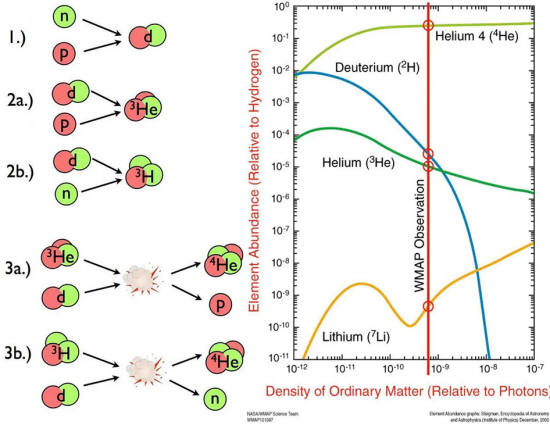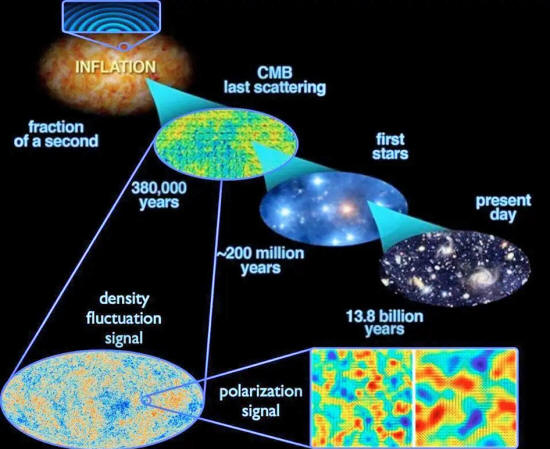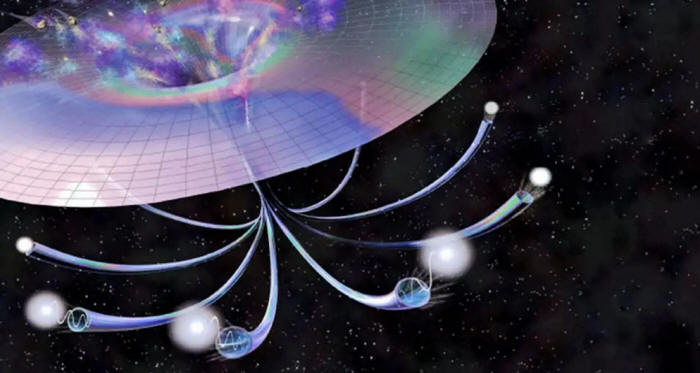|
by Ethan Siegel the closer in time we're seeing towards the Big Bang. As our observatories improve, we may yet reveal the very first stars and galaxies, and find the limits
to
which, beyond them, there are none.
To answer any physical question, you must ask the Universe itself.
But what happens when the answers aren't around anymore...?
This isn't an easy question, because in order to understand where something came from, we have to first know precisely what it is.
Similarly, we also have to understand the laws of physics well enough to be able to calculate the outcome of a physical system that begins with a specific set of initial conditions.
Only from those starting
points can we identify the possible avenues for how things got to be
the way they are today, and to figure out which ones make
predictions that agree with the Universe we inhabit.
Today, we've pushed the frontiers back incredibly far, having identified the origin of the planets, stars, elements, atoms, and more.
We've discovered overwhelming evidence for the hot Big Bang, and even information that takes us before that stupendous instant of creation.
Despite all we know, there are some epic unknowns that have no solution at present.
Here's where we are
today.
The Milky Way, pictured here above North American hoodoos, has long been a source of awe for humanity. Out there in the depths of space, the stars have their own planets, obey the same laws of physics, and although they have a diversity of compositions,
they're all quite similar to the Sun.
We know that our planet, like every other planet in the Universe, is made of atoms. A gaseous atmosphere shrouds a solid center, which consists of the densest, heaviest atoms.
Lighter layers float atop
the denser ones, leading to an onion-like compositional structure
for every planet, dwarf planet, and moon sufficiently investigated
so far.
If it gets hot and dense enough, the next set of elements in the chain will continue to fuse; otherwise, the star transitions into a stellar remnant:
On larger scales, the stars are grouped together into larger assemblages known as galaxies, with galaxies clumping together into groups, clusters, and even larger superstructures.
All together, they form a structure known as the cosmic web, where galaxies are aligned along filaments, clustered together at the nexuses of those filaments, and where that structure is separated by great, empty, cosmic voids.
the largest-scale structure in the entire Universe, is dominated by dark matter. On smaller scales, however, baryons can interact with one another and with photons, leading to stellar structure but also leading to the emission of energy that can be absorbed by other objects. Neither dark matter nor dark energy
can
accomplish that task.
However, if we want to know how it got to be that way, we have to apply the laws of physics to the Universe, and follow the evolution of the physical systems that we know exist.
For instance:
Put simply,
The way that atoms link up to form molecules, including organic molecules and biological processes, is only possible because of the Pauli exclusion rule that governs electrons, forbidding any two of them
from occupying the same quantum state.
This is interesting, because these are overwhelmingly heavy elements, as opposed to the lightest ones:
But hydrogen and helium, when we examine the cosmos, are everywhere.
In fact, they're so
abundant that they make up over 99% of the atoms in the Universe;
fewer than 1% of the atoms out there, by number, are anything
heavier.
Fortunately, when we look out into the Universe, we see the very processes that are required for this to occur in action.
of each of the elements found in the Universe today. A 'small star' is any star that isn't massive enough to become a supergiant and go supernova; many elements attributed to supernovae
may be
better-created by neutron star mergers.
Toward the ends of their lives, these stars, depending on their masses:
This explains why - consistent with observations - we can find populations of stars where fewer generations have formed previously, like in the Milky Way's outer halo, and they have lower abundances of heavy elements.
Similarly, there are
populations of stars where greater numbers of generations of stars
have formed, such as in the galactic plane closer in toward the
galactic center, and they have higher abundances of heavy elements.
After generations of
stars that lived-and-died, a new generation of stars, rich in
recycled materials from previously dead generations, gave rise to
planets, including rocky ones with the ingredients for life.
A sample of 20 protoplanetary disks around young, infant stars, as measured by the Disk Substructures at High Angular Resolution Project: DSHARP. Observations such as these taught us that protoplanetary disks form primarily in a single plane, and tend to support the core accretion scenario of planet formation. The disk structures are seen in both
infrared and millimeter/sub-millimeter wavelengths.
Nearby, we find large spiral and elliptical galaxies, heavily grouped and clustered together, with low star-formation rates, large masses, relatively low amounts of gas, and greater proportions of red stars than blue stars, overall.
Less massive, less clustered, with star-formation that peaked some ~11 billion years ago and has been declining ever since, gas rich, with lower abundances of heavy elements, and with a greater relative abundance of blue stars to red compared to present-day galaxies.
The second property, when you fold in General Relativity, leads us to the conclusion that,
The expansion causes all light to exhibit a cosmological redshift as it travels through intergalactic space, so objects that are farther and farther away will possess a larger redshift, will appear to be moving away from us more quickly, and - perhaps most importantly - we'll be seeing them as they were a longer period of time ago, since light can only travel at a finite speed:
Galaxies comparable to the present-day Milky Way are numerous throughout cosmic time, having grown in mass and with more evolved structure at present. Younger, galaxies are inherently smaller, bluer, more chaotic, richer in gas, and have lower densities of heavy elements
than their modern-day counterparts. S. Patel (Leiden U.), and the 3-D-HST Team)
If the Universe is:
...then that tells us that, early on,
We can extrapolate things
back, using this logic and applying the appropriate physics, as far
as we care to go. When we do, we arrive at an extraordinary set of
predictions.
were created in the early stages of the hot Big Bang, where raw protons and neutrons fused together to form isotopes of hydrogen, helium, lithium and beryllium. The beryllium was all unstable, leaving the Universe with only the first three elements prior to the formation of stars. The observed ratios of the elements allows us to quantify the degree of the matter-antimatter asymmetry in the Universe
by
comparing the baryon density to the photon number density. NASA/WMAP Science Team (R))
We found a leftover background of microwave radiation just 2.725º K above absolute zero:
We've detected evidence for the first pristine clouds of gas, and find that they're composed exclusively of hydrogen, helium, and a tiny amount of lithium.
We've even indirectly
detected the predicted leftover background of neutrinos and
antineutrinos from their imprint on both the large-scale structure
of the Universe and the temperature imperfections in the cosmic
microwave background.
What could have created those initial overdensities and underdensities?
That's the brilliance of the theory of cosmic inflation.
Not only would this be a mechanism for generating those seed fluctuations, and not only would inflation explain the Universe's already-observed properties (same temperature everywhere, spatial flatness, large-scale homogeneity, etc.), but it would make new predictions as to what those fluctuations ought to look like.
get stretched across the Universe, and when inflation ends, they become density fluctuations. This leads, over time, to the large-scale structure in the Universe today, as well as the fluctuations in temperature observed in the CMB. New predictions like these are essential for demonstrating the validity of
a
proposed fine-tuning mechanism. the DOE/NASA/NSF Interagency Task Force on CMB research)
Only, instead of having no energy in it (or a very small amount, as in the case of today's dark energy), it possessed a tremendous amount of energy inherent to the fabric of space.
As the Universe expands, more space is created, and so the energy density remains constant.
As a result, the Universe
gets imprinted with the same properties everywhere, it gets
stretched so that its curvature is flat, and the quantum
fluctuations that normally pervade all of space on tiny scales
instead get stretched, by inflation, to great cosmic ones.
...and it also predicts that the properties of the Big Bang's leftover glow should indicate a maximum temperature for the hot Big Bang that's substantially lower than the maximum possible temperature:
a series of universes will be spawned as inflation continues, with each one being completely disconnected from every other one, separated by more inflating space. One of these "bubbles," where inflation ended, gave birth to our Universe some 13.8 billion years ago, where our entire visible Universe is just a tiny portion of that bubble's volume.
Each
individual bubble is disconnected from all of the others.
Because of the nature of inflation, it by necessity wipes out any information that existed in the Universe before it happened. In fact, we can only ever hope to access what occurred during the final ~10-32 seconds or so of inflation; anything that occurred earlier will be inaccessible to us from here in our Universe.
Although we can state
with confidence where our observable Universe came from, and explain
the origin of a great many phenomena within it, the questions of
where things like space, time, energy, or the laws of physics came
from in the first place, or whether they even began at all, remain
unanswered.
There are a finite number of particles, encoding a finite amount of information, that have existed for a finite amount of time within our visible Universe.
While questions like why our Universe is filled with matter and not antimatter, why we have dark matter and dark energy, and why the constants of nature have the values they do may someday be answered, there is no guarantee that what remains in the Universe, today, gives us sufficient information to find the answers.
Whether we'll ever answer
these questions remains unknown, but the instant we decide we can't
and give up the search, we'll be right.
|


